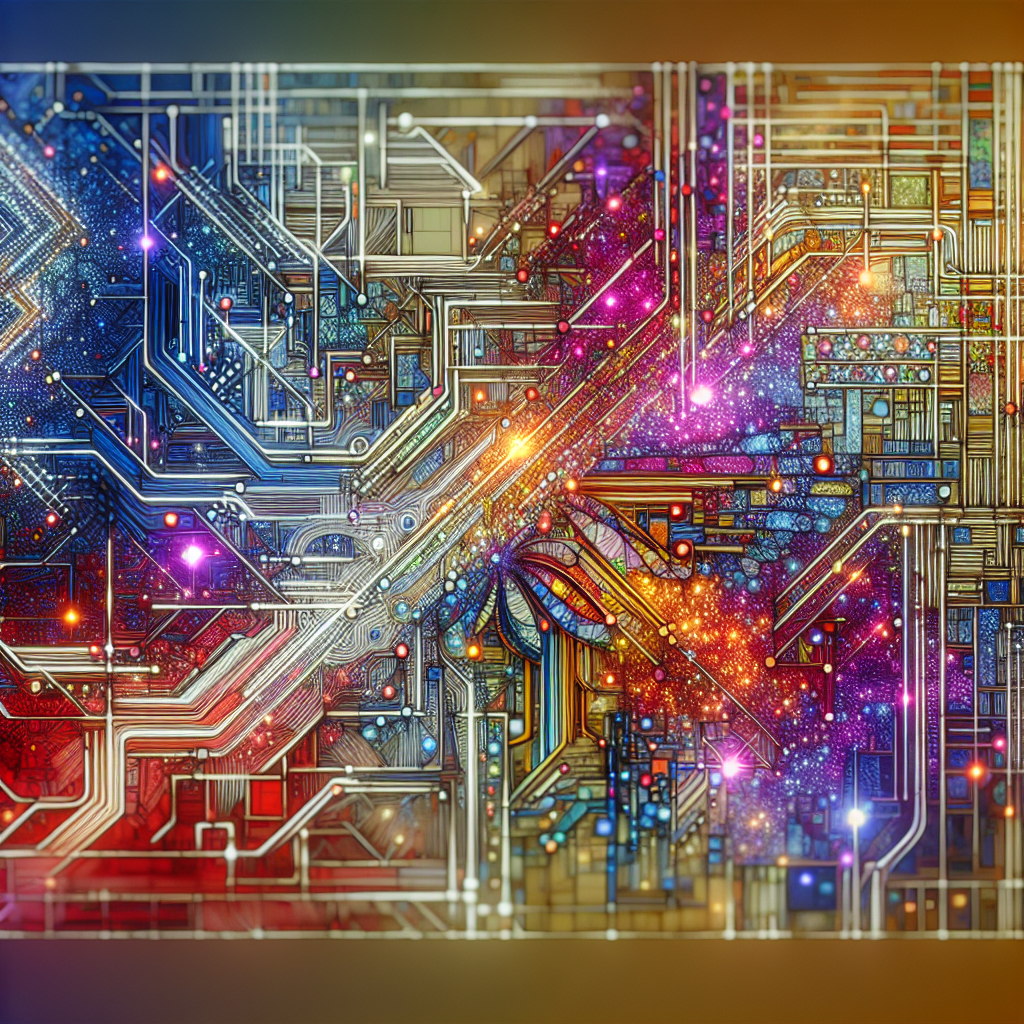Artificial intelligence (AI) has revolutionized many aspects of our lives, from the way we communicate to the way we shop. One area where AI is making a significant impact is in design. AI-generated design is a rapidly growing field that is changing the way we create and appreciate art.
Exploring the aesthetics of AI-generated design involves looking at how AI algorithms can create unique and innovative designs that are often beyond the capabilities of human designers. These designs can range from simple patterns and logos to complex works of art that challenge our traditional notions of aesthetics.
One of the key advantages of AI-generated design is its ability to generate a large number of variations quickly and efficiently. This can be particularly useful in industries such as fashion and advertising, where there is a constant need for fresh and eye-catching designs. AI algorithms can analyze vast amounts of data and generate designs that are tailored to specific audiences and trends.
Another advantage of AI-generated design is its ability to break free from traditional design conventions. Human designers are often constrained by their own biases and preconceptions, which can limit their creativity. AI algorithms, on the other hand, have no such limitations and can create designs that are truly original and unexpected.
AI-generated design also has the potential to democratize the design process. By automating the design process, AI algorithms can make design tools more accessible to a wider range of people, including those who may not have formal training in design. This can empower individuals and small businesses to create professional-looking designs without the need for expensive software or specialized skills.
One of the most well-known examples of AI-generated design is the work of the artist and researcher Mario Klingemann. Klingemann uses AI algorithms to create mesmerizing and surreal artworks that blend elements of photography, painting, and sculpture. His work challenges our perceptions of what is possible in art and raises questions about the role of the artist in the creative process.
Another example of AI-generated design is the use of generative adversarial networks (GANs) to create realistic images of non-existent faces. These images are indistinguishable from real photographs and raise ethical questions about the potential misuse of AI-generated content.
Despite its many advantages, AI-generated design also raises some challenges and concerns. One of the main concerns is the potential loss of human creativity and agency in the design process. As AI algorithms become more sophisticated, there is a risk that human designers may become redundant, leading to a homogenization of design styles and a lack of diversity in creative output.
Another concern is the ethical implications of AI-generated design. Who owns the rights to AI-generated designs? Can AI algorithms be held accountable for copyright infringement or plagiarism? These questions are still being debated in legal and ethical circles, and there is no clear consensus on how to address them.
Despite these challenges, AI-generated design has the potential to revolutionize the way we create and appreciate art. By harnessing the power of AI algorithms, designers can push the boundaries of creativity and explore new possibilities in design. The aesthetics of AI-generated design are still being explored and defined, but one thing is clear: AI is changing the way we think about art and design.
FAQs:
Q: Can AI-generated design replace human designers?
A: While AI-generated design has the potential to automate certain aspects of the design process, human designers bring a unique perspective and creativity that AI algorithms cannot replicate. AI can be a powerful tool for enhancing and augmenting human creativity, but it is unlikely to replace human designers entirely.
Q: How can I incorporate AI-generated design into my own creative process?
A: There are a variety of tools and platforms available that allow designers to experiment with AI-generated design. These tools can help generate ideas, explore new design possibilities, and streamline the design process. By incorporating AI into your creative workflow, you can push the boundaries of your own creativity and explore new avenues in design.
Q: What are the ethical considerations of AI-generated design?
A: The ethical implications of AI-generated design are still being debated and are a complex and multifaceted issue. Some of the key considerations include issues of copyright, ownership, accountability, and bias in AI algorithms. It is important for designers and creators to be aware of these ethical considerations and to engage in ongoing discussions about how to address them.
In conclusion, exploring the aesthetics of AI-generated design is a fascinating and rapidly evolving field that is changing the way we create and appreciate art. By harnessing the power of AI algorithms, designers can push the boundaries of creativity and explore new possibilities in design. While there are challenges and concerns associated with AI-generated design, the potential benefits are vast and exciting. As AI technology continues to advance, we can expect to see even more groundbreaking and innovative designs created by AI algorithms.

